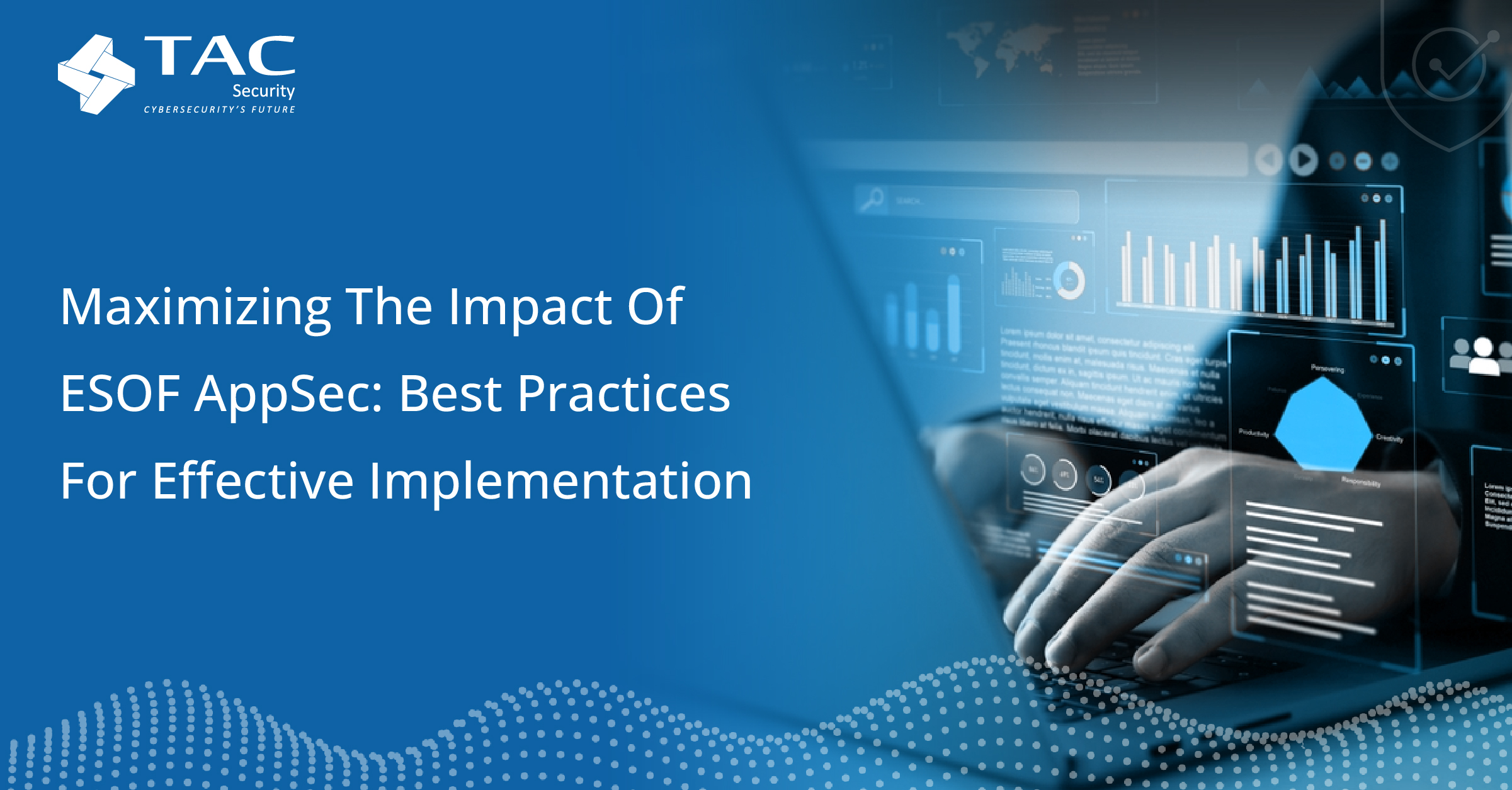Maximizing the Impact of ESOF AppSec: Best Practices for Effective Implementation

After exploring the advanced features of ESOF AppSec and how it transforms application security, it’s essential to understand how to maximize its potential. Implementing ESOF AppSec is not just about adding another security tool—it’s about integrating it into your existing processes to achieve comprehensive protection and operational efficiency.
In this follow-up, we’ll dive into the best practices for implementing ESOF AppSec, optimizing its features, and driving a more proactive security posture.
Why Implementation Matters in Application Security
While deploying ESOF AppSec offers immediate security benefits, its true impact is realized when it’s seamlessly embedded into your workflows. Proper implementation enhances collaboration across development, operations, and security teams, ensures timely remediation of vulnerabilities, and aligns with business objectives.
Best Practices for Implementing ESOF AppSec
1. Embed ESOF AppSec into Your DevSecOps Pipeline
- For ESOF AppSec to be most effective, it should be integrated early and continuously within your DevSecOps pipeline. This enables automated testing at various stages of development, from initial coding to pre-release.
- Use ESOF AppSec’s CI/CD integrations with popular tools like Jenkins, GitLab, and GitHub Actions to ensure security checks occur automatically as part of the build and deployment processes.
- The earlier vulnerabilities are identified, the less costly they are to fix. Integrating security into development processes also fosters a culture of security-first development among developers.
2. Leverage Real-Time Cyber Risk Scoring for Prioritization
- The AI-powered Cyber Risk Score is a unique feature of ESOF AppSec that provides dynamic insights into your application’s security posture. Use this score to guide decision-making and resource allocation.
- The score helps teams identify which vulnerabilities to address first based on their potential impact, rather than simply fixing issues in the order they’re found. This risk-based approach enables efficient prioritization and faster response times.
3. Utilize Both Automated and Manual Testing
- While ESOF AppSec offers advanced automated vulnerability scanning, manual penetration testing remains an important layer of security. Use the platform’s manual testing features to uncover complex vulnerabilities that automated tools may miss, such as business logic flaws and chained attacks.
- Conduct regular comprehensive assessments by scheduling a combination of automated scans and manual penetration tests to ensure a deep level of security across all applications.
4. Enable Continuous Monitoring for Ongoing Protection
- Cyber threats are constantly evolving, making continuous monitoring a crucial part of application security. ESOF AppSec’s continuous scanning capabilities provide ongoing assessments to identify emerging threats in real-time.
- Configure automated scans to run daily, weekly, or bi-weekly, depending on your organization’s security requirements. This helps in maintaining a constant state of readiness against new vulnerabilities.
5. Implement a Vulnerability Timeline Review Process
- One of ESOF AppSec’s standout features is its vulnerability timeline, which tracks each vulnerability from discovery to remediation. Set up regular review sessions with your security team to evaluate the timeline, identify bottlenecks, and assess the effectiveness of remediation efforts.
- Use this feature to track mean time to detect (MTTD) and mean time to remediate (MTTR), two critical metrics that help optimize your vulnerability management process.
6. Customize Reporting for Stakeholder Engagement
- ESOF AppSec’s customizable reports cater to different stakeholders, from developers and security engineers to executives and board members.
- Provide executive summary reports for decision-makers, focusing on high-level insights and the business impact of vulnerabilities. Meanwhile, deliver detailed technical reports to development teams, offering clear guidance on remediation strategies.
- Use reporting to demonstrate continuous security improvements over time, helping stakeholders understand the tangible benefits of ESOF AppSec.
7. Utilize Advanced Analytics for Strategic Planning
- ESOF AppSec offers powerful analytics that can help teams not only understand current vulnerabilities but also identify trends and recurring issues. Use this data to inform strategic planning and guide security investments.
- Advanced analytics can also help refine security policies, enhance training programs for developers, and align security initiatives with broader business goals.
8. Optimize Integration with Third-Party Tools
- ESOF AppSec’s compatibility with third-party tools for logging, ticketing, and compliance management enhances workflow efficiency.
- Integrate ESOF AppSec with tools like Splunk, ServiceNow, and Jira to streamline vulnerability management, create automated tickets, and track remediation progress. This ensures that security insights from ESOF AppSec are actionable and easily managed.
Measuring Success: How to Evaluate ESOF AppSec Implementation
Once ESOF AppSec is fully implemented, it’s essential to evaluate its effectiveness. Here’s how to measure success:
- Reduction in Vulnerability Backlog
- Track how quickly vulnerabilities are identified, prioritized, and remediated. A reduction in backlog indicates that the platform is effective in helping teams address issues promptly.
- Improved Compliance Metrics
- Use ESOF AppSec’s compliance reporting to monitor adherence to regulatory requirements, such as OWASP, GDPR, and PCI-DSS. Improved compliance scores suggest successful implementation.
- Faster Time to Remediate (TTR)
- One of the key indicators of success is a reduced TTR, reflecting the efficiency of vulnerability management processes and the effectiveness of ESOF AppSec’s risk-based prioritization.
- Higher Cyber Risk Score
- Over time, you should see an increase in your overall Cyber Risk Score, indicating that your applications are becoming more secure as vulnerabilities are continuously identified and resolved.
Advanced Use Cases for ESOF AppSec
- Integrating with Security Operations Centers (SOCs)
- ESOF AppSec’s real-time alerts can be integrated into SOCs for immediate threat response. This enables SOC analysts to respond quickly to potential breaches, providing a more proactive defense mechanism.
- Dynamic Testing in CI/CD Pipelines
- Use ESOF AppSec’s dynamic testing capabilities in CI/CD pipelines to prevent the release of insecure code, ensuring that only thoroughly tested code moves to production.
- Strategic Security Automation
- Automate the deployment of security patches and updates based on ESOF AppSec’s findings. This use case allows organizations to rapidly address vulnerabilities without manual intervention.
Conclusion: Enhancing Security with ESOF AppSec
Implementing ESOF AppSec is more than a security upgrade; it’s a strategic transformation. By following best practices and utilizing the platform’s advanced capabilities, businesses can achieve a proactive, unified, and highly effective application security posture. With ESOF AppSec, organizations can not only protect their applications from existing threats but also anticipate and prevent future vulnerabilities.





